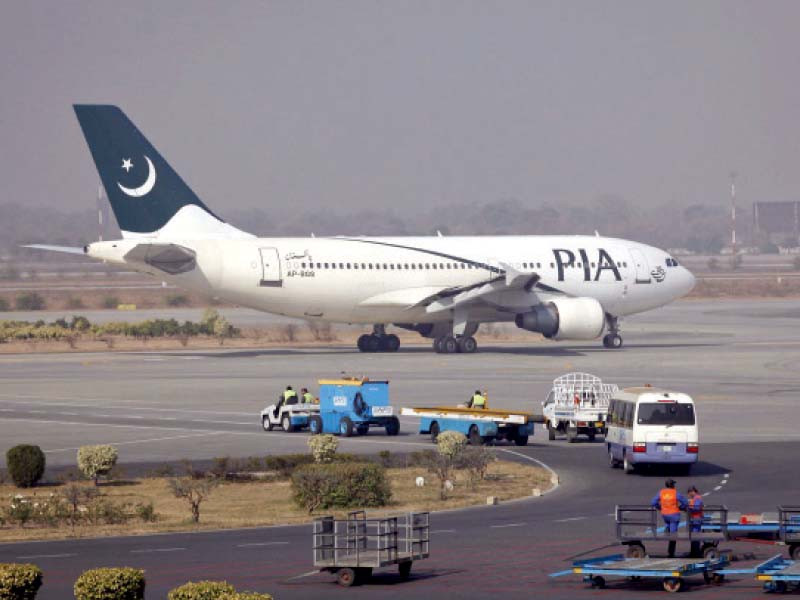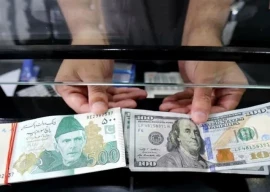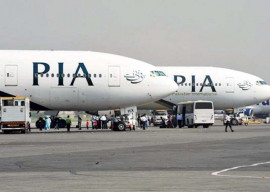
Taking over Pakistan International Airlines’ (PIA) liabilities worth Rs457 billion by converting them into equity will be conditional on bringing in private sector management, said Finance Minister Shaukat Tarin during a meeting of the cabinet.
In an earlier meeting, the minister had advised that while consultants were working on a corporate business plan for PIA, the government should explore the interest of domestic and international business groups in entering into a management contract and operating PIA once the balance sheet was restructured as proposed and the business plan was approved.
In light of the above developments, the Aviation Division had recommended that the cabinet may agree to the conversion of PIA liabilities amounting to Rs457.1 billion into equity.
The liabilities would be parked in a special purpose vehicle. The Finance Division would liquidate direct government loans and guaranteed loans over the next six years in accordance with the amortisation schedule.
PIA would follow the financial restructuring plan according to the timelines agreed with the board. No further loans or guarantees would be furnished by the government once the PIA restructuring plan becomes effective.
During discussion, the finance minister unequivocally stated that the takeover of PIA’s liabilities of Rs457 billion by the federal government was conditional on bringing in private sector management.
The proposal made by the PIA management, in consultation with presidents of National Bank of Pakistan, Bank Alfalah and The Bank of Punjab, was put forward to the financial restructuring committee, headed by the finance secretary.
The committee has held seven meetings, also attended by the aviation secretary, to assume financial liabilities of Rs457.1 billion. The plan will enable PIA to mobilise capital from the financial market on an improved balance sheet.
Recommendations
The initial assessment of the IATA Consultancy endorses findings of the restructuring plan. There can be no strengthening of PIA’s balance sheet or reduction in permanent losses without significant assistance with cleaning up of the balance sheet.
“The government must play an instrumental role in directly helping and facilitating some of the measures and PIA must reform its corporate structure and business model,” IATA Consultancy said while agreeing with the main proposal of PIA.
READ PIA privatisation
Until PIA is able to fundamentally reform itself, through a de-leveraged balance sheet, it will be difficult to attract third-party equity participation.
The cabinet secretary pointed out that it would not be in accordance with the Rules of Business 1973 to make any decision, especially when it entailed large sums of public money, on a presentation.
He advised that a summary be initiated for the cabinet by the Aviation Division, incorporating the viewpoints of all stakeholders, so that everything was on record as per rules and the cabinet could take a well-informed decision.
The cabinet took note of the presentation by the adviser to prime minister on institutional reforms and austerity on PIA’s restructuring plan and directed the Aviation Division to move a summary for the cabinet, after incorporating the views of all stakeholders, for formal approval of the plan, as amended in light of the observations of the finance minister.
Measures to boost revenue
If the Supreme Court removes the ban on hiring, PIA will recruit qualified personnel to successfully run the restructured operations of the airline.
The existing fleet consists of old and narrow-body aircraft, ie B777, A320 and ATR, which are not fuel efficient. The government has been recommended to replace the fleet with new, fuel-efficient aircraft.
Fuel cost savings can reduce the burden by Rs15-20 million per annum, and savings of Rs200 million in maintenance cost can be made.
It has been further recommended to pursue aggressive network optimisation and expansion initiatives through the code-sharing arrangements made with Turkish Airlines, Thai Airways, Etihad and Pegasus Airline.
Arrangements should also be extended to wider networks where PIA does not operate. Seat factor is expected to increase to approximately 82% by 2023, compared to the current 75%. Agreements in the UK and Spain with local train and bus operators to accommodate passengers from areas where PIA does not operate should be made.
Such operations have been expanded to more operators for route rationalisation, eliminating loss-making routes, focus on profitable routes and targeting ethnic Pakistani travellers.
As a result, new profitable routes have been started and loss-making routes were discontinued. Additional frequencies on profitable routes have been mounted.
PIA will continue this strategy to analyse routes through the Route Diagnostic Labs to achieve further rationalisation of routes as well as for exploring new markets.
Business collaboration with corporate houses, especially on domestic networks, has been enhanced. Premium brand image of PIA to be restored for value addition services to customers.
Sabre Sonic system has been replaced after 19 years as it has limited functionality. As of 2019, PIA has updated to Crane Passenger Services System (PSS). PSS is a suite of over 12 applications for scheduling, flight operations, fair filing, disruptions, departure control etc. This will improve business processes of company, better customer experiences and new revenue streams.
Published in The Express Tribune, May 5th, 2021.
Like Business on Facebook, follow @TribuneBiz on Twitter to stay informed and join in the conversation.

1731588327-0/BeFunky-collage-(59)1731588327-0-405x300.webp)
1731587470-0/lady-gaga-(2)1731587470-0-165x106.webp)

1727341229-0/diddy-(13)1727341229-0-165x106.webp)
1731584966-0/diddy-(43)1731584966-0-165x106.webp)
















COMMENTS
Comments are moderated and generally will be posted if they are on-topic and not abusive.
For more information, please see our Comments FAQ